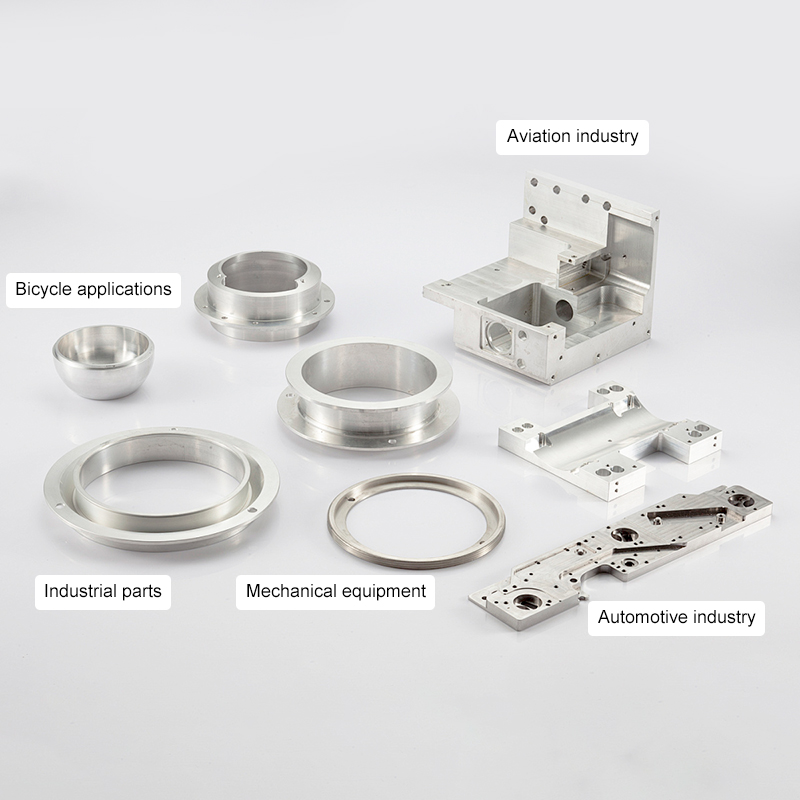6061-T6 Aluminum: Properties, Heat Treatment & Applications
6061-T6 aluminum is strong. This metal is heat-treated and aged on purpose to boost its strength while keeping it light, making it useful in many industries.
It is very tough. It can handle about 310 MPa before breaking and 276 MPa before it starts to bend, which beats some types of stainless steel.
Key 6061 Aluminum T6 Material Properties
Here are the main numbers. The metal has a tensile strength of about 310 MPa, a yield strength of 276 MPa, a density of 2.7 g/cm³, and is heat treated at around 527°C to give it its strength.
| Property | Value |
|---|---|
| Tensile Strength | 310 MPa |
| Yield Strength | 276 MPa |
| Density | 2.7 g/cm³ |
| Heat Treatment Temperature | 527°C |
Heat Treatment and Aging Process
The metal is made stronger by heating and cooling. First, it is heated so that its ingredients mix well, then it is cooled fast in water, and finally it is heated again for several hours to lock in its strength.
It is heated at about 980°F (527°C) for one hour. This step mixes the parts of the metal and dissolves the elements into one solution, which is key for a strong material.
It is cooled quickly in water. This rapid cooling, or quenching, stops unwanted changes as it cools and keeps the metal hard.
It is then aged with heat. The metal is heated at roughly 350°F (177°C) for eight hours so that tiny areas form that greatly add to its strength.
It gains better properties. The full heat cycle, known as T6 temper, boosts hardness by 65%, ultimate strength by 23%, yield strength by 25%, and fatigue strength by 12%, giving the metal its top performance.
-
•Key heat treatment steps:
- Solution treatment at 980°F (527°C) for 1 hour
- Quenching by quickly cooling in water
- Artificial aging at 350°F (177°C) for 8 hours
-
•Property improvements:
- Hardness: +65%
- Ultimate tensile strength: +23%
- Yield strength: +25%
- Fatigue strength: +12%
Strength-to-Weight Ratio Advantages
6061-T6 aluminum is very light. With a density of 2.7 g/cc, it saves weight compared to steel while still keeping high strength, which is why it is popular in aerospace, car making, and construction.

6061-T6 aluminum components used in aerospace and automotive industries
It is tough despite its low weight. Its strength and low density give it a high strength-to-weight ratio, which helps engineers design light but strong parts that are good for saving fuel and making efficient airplanes.
-
•Key advantages:
- Lightweight: about one-third the density of steel.
- High specific strength: 276 MPa 2.7 g/cm3 ≈ 102 kN·m·kg (roughly 276 MPa with 2.7 g/cm³ density, around 102 kN·m/kg.)
- Helps vehicles and aircraft use less fuel.
- Supports building large, light structures.
Corrosion Resistance in Lightweight Design
It does not rust easily. When exposed to air, the metal forms a thin oxide layer that shields it from further damage, even in wet or salty places.
It fights corrosion well. This protective layer can be natural, thickened by chemicals, or made even stronger through anodizing, which keeps it safe in harsh conditions like near the sea.
-
•Corrosion resistance features:
- Oxide layer thickness: 5–20 nm naturally, 1–3 μm with chemical treatment, or 3–30 μm when anodized.
- Resistant to stress corrosion cracking.
- Corrosion current in chloride settings: 0.012 μA/cm².
- 8-day corrosion rate in air: 0.031 mm per year.
The mix of light weight, strong build, and rust resistance makes it ideal for shipbuilding and airplanes. These traits are vital for building structures that must be both light and durable in tough environments.
Thermophysical Characteristics
It handles heat in a special way. The metal has a density of 2.7 g/cm³, a thermal conductivity of about 167 W/m-K, and expands by 23.6 μm/m-°C between 20°C and 100°C, which helps it spread heat fast.
These features make it useful in many tasks. Its ability to move heat well and stay light makes it popular for use in electronic heat sinks and many parts in airplanes and other structures.
-
•Key physical properties:
- Melting range: 582 − 652°C (solidus to liquidus)
- Specific heat capacity: 897 J/kg·K.
- Electrical resistivity: 3.99 × 10−6 Ω·cm
- Poisson's ratio: 0.33
- Modulus of elasticity: 68.9 GPa
These properties make 6061-T6 aluminum particularly suitable for applications requiring lightweight, thermally conductive materials with good mechanical strength, such as heat sinks in electronics and structural components in aerospace.
Common Applications of 6061-T6 Aluminum
-
•Aerospace:
- Aircraft frames and structural components
- Aircraft fittings and fasteners
- Fuel and hydraulic tubing
-
•Automotive:
- Chassis components
- Body panels and frames
- Suspension components
- Heat exchangers
-
•Marine applications:
- Boat hulls and decking
- Marine hardware and fittings
- Structural components for marine vessels
-
•Electronics:
- Heat sinks and thermal management
- Electronic enclosures
- Chassis for electronic devices
Conclusion: Why 6061-T6 Aluminum Continues to Excel
6061-T6 aluminum remains a top choice for engineers and designers across multiple industries due to its exceptional combination of strength, light weight, corrosion resistance, and thermal properties. The T6 temper treatment significantly enhances its mechanical properties while maintaining excellent workability and weldability. Whether in aerospace applications demanding high strength-to-weight ratios, automotive components requiring durability and weight reduction, or electronic devices needing efficient thermal management, 6061-T6 aluminum delivers outstanding performance across diverse operating conditions.




